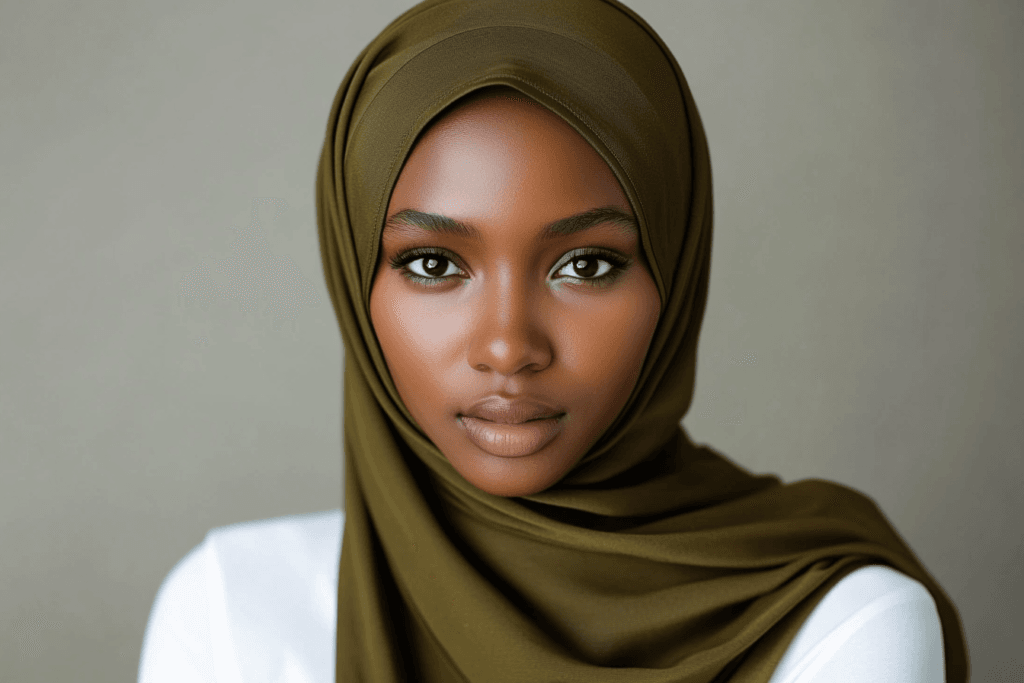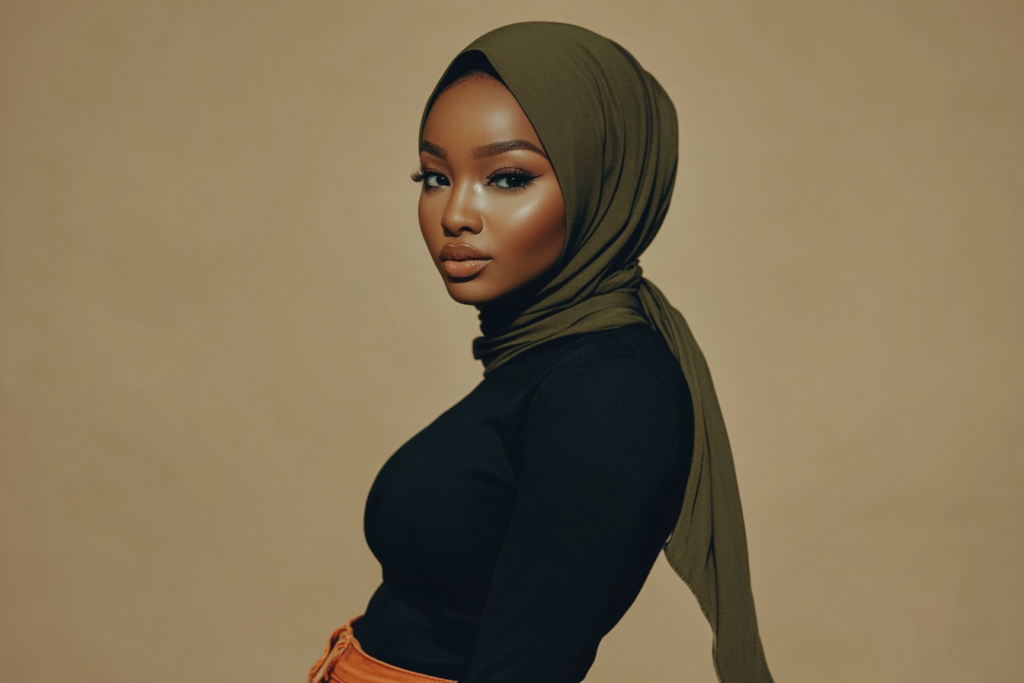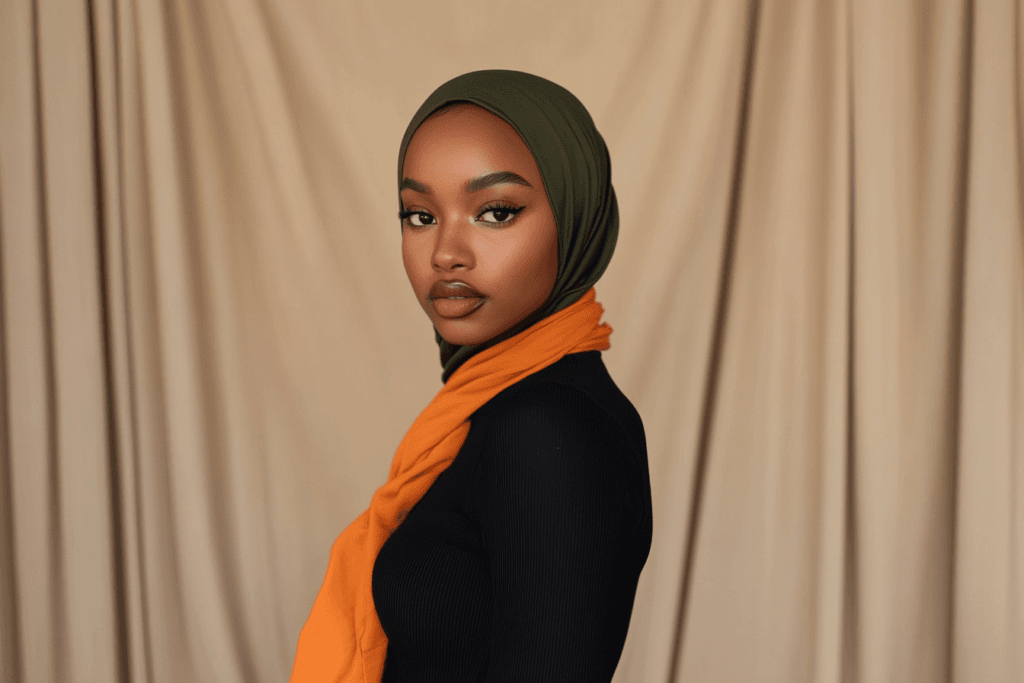
When selecting headscarves and hijabs, the choice of fabric is crucial.
The best breathable fabrics, such as cotton, bamboo, and linen, keep you cool. They allow air to flow, reducing heat and sweat. These fabrics also prevent skin irritation, making them ideal for daily use. Bamboo is soft and eco-friendly, while cotton is flexible and great for all-day wear. Linen is one of the best breathable fabrics, making it perfect for hot days.
Choosing the best breathable fabrics allows you to enjoy comfort and style while remaining practical.
Key Takeaways
- Select fabrics such as cotton, bamboo, or linen for your headscarves. They help you stay cool and comfy.
- Look for fabrics called ‘moisture-wicking’ or ‘lightweight.’ These allow air to flow and regulate body temperature by managing sweat.
- Don’t use heavy polyester or thick blends in hot weather. They hold heat and feel uncomfortable.
- Consider your daily tasks when selecting fabric. Breathable ones are great for long hours at work or prayer.
- Check if fabric is breathable by holding it to light. If light shines through, it likely lets air pass.
- If you have sensitive skin, choose soft fabrics like bamboo or silk. These are gentle and won’t irritate your skin.
- Layer thin fabrics like chiffon or jersey for style without extra weight. Use undercaps to keep them in place.
- Wash breathable fabrics gently to keep them soft and comfy for a long time.
Why Is Breathability Important for Headscarves and Hijabs?
How Fabric Impacts Heat, Sweat, and Skin Comfort
The fabric of a headscarf affects how comfy it feels. Breathable fabrics like cotton or bamboo help keep you cool. They let heat escape and reduce sweating. Too much sweat can irritate your skin and feel bad. Fabrics like modal or linen pull sweat away from your skin. This keeps you dry and fresh, even on hot days.
Non-breathable fabrics trap heat and sweat. This makes you feel sticky and uncomfortable. Over time, it can cause skin issues like rashes or acne. Picking the right fabric keeps your scarf light and comfy in any weather.
Tip: Choose fabrics labeled “moisture-wicking” or “lightweight” for summer scarves.
The Role of Airflow in Preventing Irritation
Airflow is key to keeping your scalp and skin healthy. Fabrics with good airflow stop sweat from building up under the scarf. This is helpful for people with sensitive skin or allergies.
Breathable fabrics like jersey or chiffon let air pass through easily. This keeps your scalp cool and stops itching. Heavy or tightly woven fabrics block airflow. This can make you feel hot and uncomfortable, especially after wearing them for hours.
Note: If you live in a humid area, pick loose-weave fabrics for better airflow.
Cultural and Practical Considerations for Daily Wear
Breathable fabrics are not just comfy; they’re practical too. Many people wear headscarves for long hours for cultural or personal reasons. A breathable scarf stays comfy during work, prayer, or other activities.
These fabrics are also lightweight and easy to style. They’re great for layering or creating unique hijab looks. Plus, they dry quickly after washing, which is handy for busy days.
Reminder: Think about your daily needs when picking a fabric. A breathable scarf can make your day much more comfortable.

What Makes a Fabric Breathable?
Air Permeability and Moisture-Wicking Explained
Breathable fabrics have two main features: air permeability and moisture-wicking. Air permeability means how easily air moves through the fabric. This decides if the material feels light or heavy. For example, bamboo fabrics are great because they have tiny gaps for airflow. Thicker cotton fabrics block air more, making them less breathable.
Moisture-wicking is also very important. It means the fabric pulls sweat off your skin. Then, it spreads the sweat out so it dries faster. Fabrics like modal and Tencel are good at this. They keep you dry and comfy, even in hot weather. Together, these features make headscarves comfortable for long wear.
Tip: Look for “moisture-wicking” or “breathable” labels when buying scarves. These fabrics work better in warm weather.
Fabric Weight, Weave, and Fiber Type
The weight, weave, and fiber type of a fabric affect breathability. Lightweight fabrics, like chiffon or linen, allow more air to pass through. Loosely woven fabrics, such as linen, let air flow better than tightly woven ones like cotton or wool.
Fiber type also matters. Natural fibers, like bamboo and cotton, are usually more breathable than synthetic ones. Bamboo fibers have tiny gaps that improve airflow. If a fabric blend has more bamboo, it breathes better. More cotton in the mix makes it thicker and less breathable.
Note: Choose lightweight, loose-weave fabrics for hot weather. They are cooler and more comfortable.
Testing Methods: ASTM D737 and Consumer-Ready Indicators
Fabric breathability is often tested using specific methods. One common test is ASTM D737, which measures how much air passes through fabric. Tightly woven fabrics, like cotton or wool, score lower in air permeability. Synthetic fabrics, like polyester, usually score higher. Coatings on fabrics can also block airflow and reduce breathability.
For quick testing at home, try simple methods. Hold the fabric up to the light. If light passes through, it likely has good airflow. Another way is to breathe through the fabric. If air moves easily, the fabric is breathable.
Reminder: ASTM D737 gives exact results, but simple tests can help you decide quickly when shopping.

What is the Best Breathable Fabrics for Headscarves and Hijabs
Cotton: Light and Easy to Wear
Cotton is a top pick for headscarves and hijabs. It is soft and light, making it great for daily use. Cotton lets air move through, helping you stay cool. This makes it perfect for hot weather or long hours of wear. It also absorbs sweat well, keeping your skin dry and comfy.
Cotton is very flexible and works for many styles. It comes in different weaves and thicknesses for all seasons. For example, thin cotton voile is great for summer. Thicker cotton twill keeps you warm in colder months. Cotton also mixes well with other fabrics, making it easy to layer or style.
Tip: Choose 100% cotton scarves for the best airflow. Avoid blends with heavy synthetic fibers that trap heat.
Bamboo: Soft and Eco-Friendly
Bamboo fabric is comfy and good for the planet. It is one of the best breathable fabrics for hot and humid days. Bamboo fibers have tiny gaps that let air pass through, keeping you cool. It also pulls sweat away from your skin, so you stay dry.
Bamboo has extra benefits that make it special. It is naturally antibacterial, which stops odors and skin problems. Some bamboo fabrics even repel insects, giving extra protection. It feels as soft as silk, making it gentle on sensitive skin. Bamboo also blocks UV rays, protecting your scalp and hair from the sun.
- Why Bamboo is a Green Choice:
- Bamboo grows fast and needs little water, making it eco-friendly.
- It breaks down naturally, so it doesn’t harm the environment.
- Its production uses fewer chemicals than synthetic fabrics.
Note: Bamboo scarves are a great mix of comfort, style, and sustainability.
Modal and Tencel: Smooth and Sweat-Free
Modal and Tencel are made from wood pulp and feel smooth. These fabrics are light but strong, making them good for casual or fancy looks. They are soft on the skin and easy to wear.
A key feature of Modal and Tencel is their ability to handle sweat. They pull sweat off your skin and dry it fast. This keeps you fresh and dry, even in hot weather or during activities. These fabrics also resist shrinking and wrinkles, so your scarf stays neat.
Modal and Tencel have a slight stretch, making them easy to style. You can wear them snug or loose, depending on your preference. Their smooth texture also reduces friction, helping prevent hair damage.
Reminder: Look for Modal or Tencel scarves with OEKO-TEX labels. This ensures they are free from harmful chemicals.
Linen: Perfect for Hot Weather
Linen is one of the best fabrics for warm weather. Its natural fibers let air move freely, keeping you cool. Even on hot days, linen helps your body stay comfortable. It also pulls sweat away from your skin and dries fast. This keeps you feeling fresh all day long.
Linen is also gentle on sensitive skin. It rarely causes irritation, making it a great choice for everyone. Whether you wear a hijab all day or style a scarf for fun, linen is both comfy and useful.
Here’s a simple look at linen’s features and how they help in heat:
| Feature | What It Does | Why It’s Good for Heat |
|---|---|---|
| Breathability | Air moves through easily, keeping you cool. | Great for summer and casual outfits. |
| Moisture-wicking | Pulls sweat away and dries quickly. | Stops sweat buildup in hot weather. |
| Hypoallergenic | Gentle on skin, good for sensitive people. | A healthy and safe fabric choice. |
Tip: Pick loosely woven linen scarves for better airflow and comfort in summer.
Jersey: Soft and Stretchy
Jersey fabric is stretchy and soft, making it very useful. It fits snugly but stays comfy, which is great for active days. Jersey feels smooth on your skin, so it won’t cause irritation.
Even though it stretches, jersey still lets air flow through. Special fabric types like TACTEL® Fiber and COOLEVER® make it even better. These fabrics pull sweat away and dry it fast. Jersey is also thick enough to wear without layers, which is super handy.
Here’s a quick look at different jersey fabric types:
| Fabric Type | Features |
|---|---|
| Cyno | Light polyester, very breathable, wicks sweat, loose knit for cooling. |
| COOLEVER® | Stretchy, dries sweat fast, great moisture control, allows easy movement. |
| TACTEL® Fiber | Soft, super breathable, lightweight, dries faster than cotton. |
| HexaDri | Double-knit polyester, removes sweat, keeps you cool and comfy. |
Note: Look for jersey scarves with moisture-wicking fibers for extra comfort.
Chiffon and Georgette: Light and Elegant
Chiffon and georgette are great for light and stylish scarves. These fabrics feel airy and drape beautifully, perfect for fancy events or summer days. Chiffon is slightly see-through, giving a soft and pretty look. Georgette is thicker with a matte finish, offering more coverage but still breathable.
Many people love chiffon and georgette for their scarves. For example, the FRC Soft Silk Chiffon Hijab is very popular. It’s lightweight and stylish, with a high user rating of 4.8 and over 430 sold. These fabrics are a top pick for hijab wearers.
| Feature | Details |
|---|---|
| Product Name | FRC Soft Silk Chiffon Hijab |
| Weight | Very light |
| Style | Fashionable |
| User Rating | 4.8 (23 reviews) |
| Sales | 430 sold |
Reminder: Use an undercap with chiffon or georgette scarves to keep them from slipping and to secure them in place.
Silk: Fancy and Comfortable for All Seasons
Silk is one of the fanciest fabrics for headscarves. It feels smooth and shiny, making it great for casual or fancy outfits. Silk is light but still looks elegant. A special thing about silk is how it adjusts to temperature. It keeps you cool in summer and warm in winter, so it works all year.
Silk is breathable, which means air can move through it. This stops heat from building up under your scarf. It also absorbs sweat but doesn’t feel wet, keeping you dry. These features make silk a top choice for staying comfy and fresh.
Silk is gentle on your skin. Its smooth surface stops irritation and hair damage. This is helpful for people with sensitive skin or fine hair. Silk scarves are also good for those with hair loss or scalp problems because they are hypoallergenic.
Here’s a simple chart of silk’s benefits:
| Feature | What It Does | Why It’s Good for Scarves |
|---|---|---|
| Temperature Control | Keeps you cool in summer and warm in winter | Works in all seasons |
| Breathability | Lets air flow easily | Stops overheating and discomfort |
| Sweat Absorption | Soaks up sweat without feeling wet | Keeps you dry and comfy |
| Skin-Friendly | Smooth and gentle on skin | Protects sensitive skin and hair |
When buying silk scarves, pick 100% natural silk, not synthetic ones. Fake silk may look the same but doesn’t breathe or adjust to temperature as well. Mulberry silk is a great choice because it’s soft and lasts a long time.
Tip: Wash silk scarves by hand with mild soap. Keep them out of direct sunlight to protect their color and softness.
Silk is stylish, comfy, and practical. It’s perfect for special events or everyday wear. With silk, you get both beauty and usefulness in one fabric.

Which Fabrics Should Be Avoided in Hot Weather?
Heavy Polyester and Non-Breathable Blends
In hot weather, avoid heavy polyester and non-breathable blends. Polyester is strong and cheap but doesn’t let air flow well. It traps heat, making it uncomfortable for long wear. Thick polyester fabrics feel even worse in warm climates.
Here’s what tests show about polyester in heat:
- Heavy polyester breathes less than natural fabrics like cotton or linen.
- It blocks airflow, making you feel too warm.
- Even with moisture-wicking, it feels less comfy on hot days.
Blends with polyester and other synthetics, like nylon or acrylic, make things worse. These blends focus on strength, not comfort, so they’re bad for summer. Avoid scarves labeled “polyester-rich” or “synthetic blends” for better breathability.
Tip: Read fabric labels. If polyester is the main material, choose bamboo or cotton instead.
Fabrics That Trap Heat and Moisture
Some fabrics trap heat and sweat, causing discomfort. Materials like satin, velvet, and synthetic knits hold heat. They block sweat from drying, leaving you sticky and uneasy.
Even lightweight, tightly woven fabrics can trap heat. For example, synthetic satin may look nice but isn’t breathable. It holds moisture, which can irritate your skin or cause breakouts.
Choose loose-weave, natural fabrics to stay cool and dry. These materials let air flow and pull sweat away from your skin.
Reminder: Avoid shiny, non-porous fabrics. They usually don’t breathe well.
Red Flags When Shopping for “Summer” Hijabs
Not all “summer-friendly” scarves are good for hot weather. Watch out for these warning signs. First, avoid scarves that feel heavy or stiff. Even if labeled lightweight, they might still be too dense for summer.
Second, skip scarves with synthetic coatings or finishes. These can block airflow, even if the fabric is natural. For example, glossy cotton scarves may trap heat and sweat.
Lastly, avoid scarves without clear fabric labels. If the material isn’t listed, it’s likely low-quality or synthetic-heavy.
Note: Test fabrics by holding them to the light. If they block light completely or feel heavy, they’re not good for summer.
By avoiding these fabrics and red flags, you’ll stay cool and comfy, even on hot days.

How Do You Choose the Right Fabric for Your Needs?
Climate, Skin Sensitivity, and Activity Level
Picking the right fabric depends on your needs and weather. Hot and humid days need light, breathable fabrics like cotton, bamboo, or linen. These fabrics let air flow and keep you dry. For cooler weather, thicker fabrics like jersey or modal give warmth but still breathe.
If your skin is sensitive, choose gentle fabrics like bamboo or silk. These are soft and help avoid irritation. For active people, fabrics like modal or Tencel are great. They pull sweat away and dry fast, keeping you comfy.
Here’s what research says about fabrics:
- Light fabrics work best in hot weather.
- Breathable fabrics lower skin temperature during exercise.
- Loose-weave fabrics, like linen, improve airflow in heat.
Tip: Pick fabrics based on your activities and local weather.
Day-to-Day Wear vs. Formal or Prayer Use
Think about when and where you’ll wear your scarf. For daily use, go for comfort and ease. Cotton and jersey are great for everyday wear. They’re durable, easy to style, and comfy for long hours. Bamboo is another good choice for its softness and breathability.
For formal events or prayer, choose elegant fabrics like silk or chiffon. Silk feels fancy and adjusts to all seasons. Chiffon is light and airy, giving a polished look. These fabrics may need an undercap to stay in place.
Reminder: Keep both practical and fancy fabrics for different occasions.
Washability, Durability, and Ethical Factors
How easy a fabric is to clean matters too. Cotton and bamboo are simple to wash and maintain. Linen is breathable but wrinkles easily and needs extra care. Silk and chiffon need gentle washing to stay nice.
Durability also varies. Linen lasts long but can feel rough. Bamboo and cotton are soft and durable. Hemp is very strong but less soft.
Think about the environment too. Bamboo and hemp are eco-friendly and need little water. Cotton uses more water and pesticides, which impacts nature.
Here’s a quick comparison:
| Fabric | Washability | Durability | Ethical Impact |
|---|---|---|---|
| Cotton | Easy to wash | Moderate | High water and pesticide usage |
| Bamboo | Easy to wash | Soft and durable | Sustainable and eco-friendly |
| Linen | Wrinkles easily | Highly durable | Low environmental impact |
| Hemp | Requires care | Very durable | Minimal water and pesticide use |
Note: Choose fabrics that are easy to care for, last long, and are eco-friendly.
By thinking about these factors, you can pick fabrics that are comfy, stylish, and good for the planet.
Picking the right fabric for headscarves makes them comfy and useful. Breathable fabrics like cotton, bamboo, modal, and linen are great choices:
- Cotton soaks up sweat and keeps you cool in heat.
- Linen is super breathable, perfect for hot summer days.
- Modal is soft, strong, and doesn’t wrinkle easily.
- Silk adjusts to temperature, working well in any season.
Tip: Choose fabrics based on your weather and activities. For everyday use, go with comfy cotton or jersey. For special events, pick silk or chiffon for a fancy look.

Conclusion
It’s important to mix style with comfort. Pick fabrics that fit your needs and match your style.
FAQ
What is the most breathable fabric for headscarves?
Cotton is the best breathable fabric. It lets air move easily, keeping you cool. Its light weight makes it great for hot days and long wear. For the best results, pick 100% cotton scarves.
Can I wear silk scarves in summer?
Yes, silk is good for summer. It helps control temperature, keeping you cool in heat. Its breathable quality stops you from overheating. Use thin silk scarves for extra comfort on hot days.
How do I test a fabric’s breathability?
Hold the fabric to the light. If light shines through, it has good airflow. You can also breathe through it. If air passes easily, it’s breathable. These quick tests help you pick the right fabric fast.
Are synthetic fabrics suitable for hijabs?
Synthetic fabrics like polyester are not ideal for hijabs in heat. They hold in heat and sweat, making them uncomfortable. Natural fabrics like bamboo or cotton are better for staying cool and comfy.
How do I care for breathable fabrics?
Wash breathable fabrics gently. Use mild soap and cold water for silk or bamboo. For cotton or linen, use a gentle machine cycle. Always check the care label to keep the fabric in good shape.
What fabric is best for sensitive skin?
Bamboo and silk are great for sensitive skin. Bamboo is soft and fights bacteria, while silk’s smooth surface avoids irritation. These fabrics are perfect for people with delicate skin.
Can I layer breathable fabrics?
Yes, you can layer breathable fabrics. Light materials like chiffon or jersey are good for layering without feeling heavy. Pair them with undercaps for extra comfort and style.
What should I avoid when buying summer hijabs?
Avoid heavy fabrics like polyester or satin. These trap heat and sweat, making them uncomfortable. Also, skip scarves with unclear labels or synthetic coatings. Choose light, natural fabrics for summer comfort.
Related:
1.Bamboo/Cotton Knitted Fabric for Thermal Comfort →
2. How to interpret air permeability test results for different types of fabrics? →
3. Insect Repellent Finish on Bamboo Fabric for Hijab Cap →
4.Global Linen Market Size, Share, Trends, & Growth Forecast Report Segmented By Type →
5. Technology Test →
